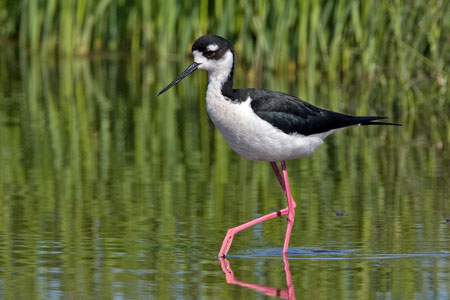
Habitats
Land Cover Definitions
Pictures and Descriptions
Marine Module »
|
5 Wetlands - Freshwater & Saltwater
Vegetated areas where plants are rooted in water or water saturated soil, or that regularly tolerate flooding for extensive time periods.
Example: 534 = Riparian area along a stream/river with conifer trees.
This coding system can be used anywhere in the U.S. because it does not use common names of different wetlands that may be region specific. For example,
freshwater marshes are dominated by herbaceous (non-woody) plants, and swamps are dominated by woody trees and shrubs. The Pacific Northwest has wetlands surrounded by trees, but the term swamp makes us think about areas in the southern parts of the United States.
-
- 0 - All wetland types
- 1 - Estuarine marsh (saltwater)
- 2 - Freshwater marsh - bog
- 3 - Riparian (rivers and streams)
- 4 - Vernal pools (pools which dry up part of the year)
- 5 - Ocean beaches (vegetated)
- 6 - Intermittent streams
0 - All wetland vegetation types
1 - Submerged/floating aquatic plants
2 - Emergent herbs/shrubs
3 - Trees - deciduous
4 - Trees - conifer
5 - Trees - mixed conifer/deciduous
6 - Development - Heavy: >60% surface development / <40% of vegetation, and if a shoreline >50% bulkheads
7 - Development - Moderate: 30-60% surface development / ~50% vegetation and <50% bulkheads
and if a shoreline, no more than 1 pier per 200 feet
8 - Development - Light: 10-30% surface development / >50% vegetation, and if a shoreline, <50% bulkheads and
no more than 1 pier per 0.5 mile
9 - Rocks, cobble, gravel, boulder
|
|


